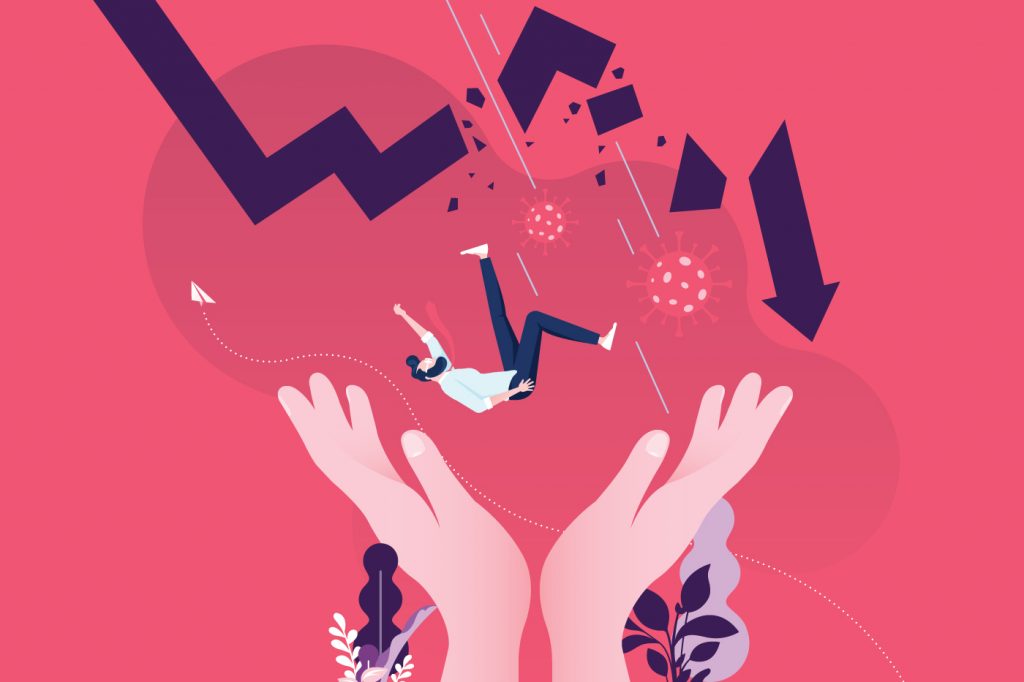Steady Hands to Hold A Full Cup
‘Never let a good crisis go to waste’.

By Angela Yap Siew Peng
Here’s the difference between this crisis and past others.
In the 1930s, when banks needed a lifeboat to survive the Great Depression, aside from holding companies coming in with their reserves, some headed to Washington with a tin cup and got it filled with US$90 million from Uncle Sam’s coffers.
Then in 2008, the global financial crisis once again saw financial institutions lining the steps of Capitol Hill with the proverbial tin cup and returning with a mug-full of bailout money. The cost of US bailouts has been pegged at US$498 billion (RM2.1 trillion) by Prof Deborah J. Lucas, Director of the MIT Golub Center for Finance and Policy.
This current crisis, however, has seen a fundamental change.
At the onset of Covid-19, financial institutions have fared better than most other sectors. After more than a decade of Basel regime reforms – overhauling financial institutions, strengthening regulatory oversight, and upping the bar for financial stability – banking may have weaned itself off pan-handling and is starting to flex its muscle as part of a global solution.
Most banks had shored up strong capital and liquidity positions, with most nuts and bolts in place ready to weather the storm. The European Banking Authority’s (EBA) preliminary assessment on 25 May 2020 of the impact of Covid-19 on the EU banking sector was mostly positive:
By and large, this reflects the position of banks across the board. It may seem a small victory to say that the industry fared better than other sectors, but it is a victory hard won, especially as many believe this crisis surpasses the Great Depression.
Financial markets have been trounced in days described as “utter carnage”. Global equities saw a US$24 trillion wipeout between December 2019 and March 2020 as well as a triple whammy – a coronavirus-triggered health crisis coupled with an oil price shock and off-the-chart volatility – leading to material declines and stagnated cash flow for borrowers.
According to a research note by S&P Global on 5 April 2020, in Asia Pacific alone, this skyrocket non-performing assets and consequent credit losses this year by as much as US$600 billion and US$300 billion, respectively. As resilient as the region is, negative ratings are inevitable with China, India, and Indonesia’s banking systems pegged to be the hardest hit.
Several trends and/or innovations have emerged as the industry navigates its way to harbour:
> Halt to dividends and buybacks. Managing Director of the International Monetary Fund (IMF), Kristalina Georgieva’s op-ed in the Financial Times this May was just one of many to calls for this. She writes: “One of the steps needed to reinforce bank buffers is retaining earnings from ongoing operations. These are not insignificant. IMF staff calculate that the 30 global systemically important banks distributed about US$250 billion in dividends and share buybacks last year. This year, they should retain earnings to build capital in the system. Of course, this has unpleasant implications for shareholders, including retail and small institutional investors, for whom bank dividends may be an important source of regular income. Nonetheless, in the face of the abrupt economic contraction, there is a strong case for further strengthening banks’ capital base.”
At the point of writing this article, the US Federal Reserve has just announced moves to cap dividends and ban buybacks by big banks including JP Morgan Chase, Wells Fargo and Bank of America, whilst the UK’s banks – Royal Bank of Scotland, HSBC, Barclays – have voluntarily scrapped payout plans totalling GBP8 billion (RM42.5 billion) to forestall a recession. Bloomberg reports that China’s banks are facing a US$42 billion dividend trap as the Communist Party defends the decision to proceed with payout to shareholders, whilst Nikkei Asian Review reports that angry Hong Kong-based retail investors of HSBC are demanding the London-based bank issue a scrip dividend (the option to receive the distribution in the form of equity) in place of cash distribution.
> Calls for sustainability as a pillar of economic recovery. Multilateral agencies, international lenders, and a growing number of research houses have come out in favour of the idea that environmental, social, and governance criteria have a material financial impact on equities and other asset classes, and should form the basis of economic recovery. Notably, the World Bank Climate Change Group’s virtual series, Kickstarting the Sustainable Recovery, introduces new research on how sustainable finance can be part of the Covid-19 recovery.
> Innovation in debt markets. In the face of tail risks – the probability of losses occurring due to rare events, of which a pandemic is one such example – there is renewed interest in tapping the bond market to fund the healthcare and economic response. Martin Scheck, Chief Executive of the International Capital Market Association, said in a recent interview with The Banker that this year’s Covid-19-related social bonds issuance has hit US$7.7 billion, mostly by multilateral agencies.
However, others such as Nordic Investment Bank (NIB) – a Helsinki-based international financial institution equally owned by the five Nordic and three Baltic countries – have issued NIB Response Bonds to finance projects that aim to alleviate the social and economic consequences of the pandemic in order to support the recovery process in member nations. The framework will follow NIB’s normal financial, risk, and liquidity policies and guidance, and differ from social bonds in its structure.

Regulators across the board are also embracing and adjusting to the ‘next normal’.
Commenting to the Financial Times this March, William Coen, the former Secretary-General of the Basel Committee on Banking Supervision, said: “…in this crisis, extraordinary measures are required. So long as the measures are just temporary, not structural or permanent, it could help reestablish confidence. I don’t think regulators are using the word forbearance; flexibility is the better ‘F’ word.”
Swift prudential measures by global and national supervisory authorities focus on flexibility to ensure banks can continue to provide adequate lending under extraordinary stress and comply with the objectives of Basel. The move enables financial institutions to extend rather than cut lines of credit, directing all efforts and resources toward stimulating the real economy and boosting the rate of recovery.
For instance, the European Central Bank nudged banks to use their prudential capital and liquidity buffers – which have significantly improved since 2008 – whilst the European Banking Authority mirrored this message by reminding that these buffers were intended for use during periods of crisis in order to uphold lending levels in the economy. Authorities have also extended support to banking systems such as liquidity or credit guarantees and relief on minimum regulatory requirements.
But is all this enough to stimulate a quick recovery?
“If you look at the forecasts that investment banks produce, and indeed governments, [these] wonderful V-shape projections suggest that we’ll be back to where we were at the end of 2019 by some point in 2021,” says Scottish-born historian Niall Ferguson in a World vs Virus podcast by the World Economic Forum.
“If you believe that, I’ll sell you a bridge,” he says drily, “because there’s no way this is going to be a V-shaped recovery.”
Veiled and harsh. Ferguson’s phrase – I’ll sell you a bridge – refers to one of the greatest cons of the 20th century by George C Parker who ‘sold’ the Brooklyn Bridge to gullible investors multiple times, implying that only a sucker would believe that this crisis will be over easy.
The Hoover Institution fellow argues that even in the less-pervasive 2008 crisis, unemployment took six years to recover to pre-crisis levels and it will likely take years before the world recovers from this one. This idea that the world will “merrily go back to where we were in a matter of months” is not just unlikely, but out of sync with economic history.
In early 2007, Nassim Nicholas Taleb, a mathematical statistician and former options trader coined the term ‘black swan’ to mean an unpredictable, improbable, and catastrophic occurrence. His bestselling book of the same title sought to illustrate why business and society needed to change in order to mitigate risks in a hyperconnected world. Several months after its publication, The Black Swan’s predictions had seemingly materialised in the form of the global financial crisis.
Describing the characteristics of a black swan event, Taleb wrote: “First, it is an outlier, as it lies outside the realm of regular expectations, because nothing in the past can convincingly point to its possibility. Second, it carries an extreme ‘impact’. Third, in spite of its outlier status, human nature makes us concoct explanations for its occurrence after the fact, making it explainable and predictable.”
Is Covid-19 a black swan? According to Taleb, the answer is a categorical ‘No’.
An excerpt from The New Yorker‘s April 2020 interview with the Lebanese American author:
“The Black Swan was meant to explain why, in a networked world, we need to change business practices and social norms — not, as he (Taleb) recently told me, to provide “a cliché for any bad thing that surprises us.” Besides, the pandemic was wholly predictable — he, like Bill Gates, Laurie Garrett, and others, had predicted it — a white swan if ever there was one. “We issued our warning that, effectively, you should kill it in the egg,” Taleb told Bloomberg. Governments “did not want to spend pennies in January; now they are going to spend trillions.”
His description of the pandemic seems to fit another animal metaphor – that of the ‘gray rhino’ event, which is described by its progenitor, Michele Wucker, as “a highly probable, high-impact yet neglected threat: kin to both the elephant in the room and the improbable and unforeseeable black swan. Gray rhinos are not random surprises, but occur after a series of warnings and visible evidence.”
Wucker’s 2016 bestseller, The Gray Rhino: How to Recognize and Act on the Obvious Dangers We Ignore, has since been embraced internationally, most notably by China’s top brass as a way to signal policy changes to reduce financial risk in the economy as well as deflecting those looming high-impact threats.
In The World Ahead: Covid-19 and the Perils of Prediction podcast by The Economist, Wucker says it’s never too late to catch it: “I always ask people to ask themselves, “What’s my gray rhino? What’s the big thing that’s coming at me? What am I doing about it? Is it working and what can I do better?””
“That sort of question is so shockingly simple and obvious, if you will, that people don’t always pay attention to it. But it’s true, it’s almost counter-intuitive that the most obvious things are the ones we don’t pay attention to and when you’re more aware of that vulnerability we have a lot of power to keep from being trampled by things that other people are ignoring.
“Part of my message is that it’s okay if you missed something in front of you because it’s human. But it’s not okay once you realise how vulnerable you are to missing the obvious to keep ignoring it. So step on to it.”
Far from holding a cup out during this crisis, banking has thus far held its own. But a few careless actions is all it takes to turn the tables.
As for those steady hands – well, they’ve long been at work since 2008, proof that banking’s reform pains haven’t been for naught
Angela Yap Siew Peng is a multi-award-winning entrepreneur, author, and writer. She is Director and Founder of Akasaa, a boutique content development firm with presence in Malaysia, Singapore, and the UK and holds a BSc (Hons) Economics.